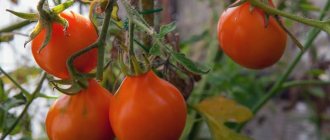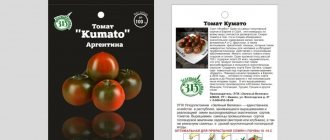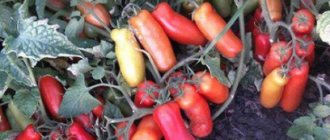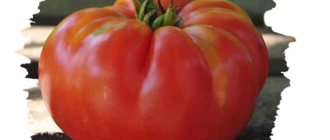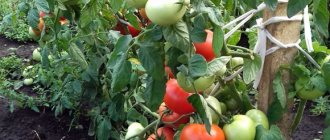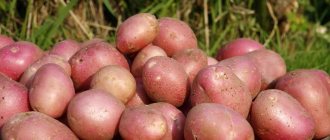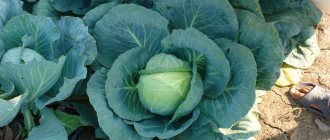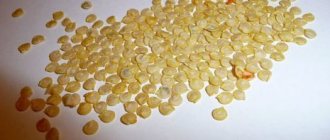The “Gnome” variety is very popular among owners of personal plots. Tomatoes take up little space in the garden, rarely get sick, ripen early, and withstand temperature changes. And these tomatoes do not require special attention: they don’t even need to be tied up or pinched.
They feel great in the open ground, as well as at home - on the balcony and windowsill. The low-growing bush is harvested throughout the summer. On one square meter you can grow up to 6 kilograms of juicy and sweet tomatoes.
Description of the variety
"Gnome" refers to early ripening varieties of tomatoes. It takes from 90 to 120 days to ripen. Quite unpretentious in content. The plant is low-growing, determinate (the growth of the main stem is limited by flower clusters), grown in open ground or under film cover.
The bushes are not standard and weakly branched. The maximum height of the plant is 55 cm. The leaves are not large, have a light greenish tint with a barely noticeable gloss. Tomato inflorescences are miniature. The formation of the first inflorescences occurs above the 8th leaf. The next ones begin to grow at intervals of 3 leaves.
Fruit characteristics and yield
Tomatoes of the "Gnome" variety have a round shape, smooth texture and a bright red hue. The minimum weight of one fruit is 40 g, the maximum is 65 g.
Tomatoes have a pleasant sweetish taste. They do not crack, have a long service life, which simplifies their transportation over long distances. This variety of tomatoes is wonderful because it can be used not only for fresh vegetable salad, but also for canning and various sauces.
The yield indicators of the “Gnome” variety are among the highest. If you follow all agrotechnical requirements and properly care for the crop from the 2nd quarter. m of planted bushes, you can collect about 6 kg of ripe and juicy fruits.
Resistance to pests and diseases
One of the main advantages of the fruits of this variety is resistance to various diseases, viruses and harmful insects. Therefore, shrubs rarely cause trouble for gardeners.
The only threat is the appearance of fungus. If you do not get rid of it in a timely manner, it can cause serious damage to the health of the fruit. Ventilation of greenhouses and treatment with special preparations are carried out regularly as preventive measures.
Be sure to follow crop rotation. Under no circumstances should you plant tomatoes of this variety in an area where one of the representatives of the nightshade family was previously planted: potatoes, eggplant or peppers. The most preferred options are cucumber and white cabbage.
The plant has excellent immunity to diseases such as macrosporiosis and late blight - extremely dangerous diseases of most tomatoes. Spraying with a solution of “Fitosporin” or “Shine” will help avoid infection.
Care
Caring for this type of tomato is standard and does not require special strength or skills. Every two weeks, special fertilizing should be applied, which includes both organic and mineral substances. Litter, humus or wood ash are used as organic matter. But mineral fertilizers should have a high concentration of potassium and phosphorus.
Drip irrigation should be used, because it allows moisture to penetrate into the soil and does not cause excess moisture. Watering should be carried out exclusively with warm water. Also, do not forget about regularly loosening the soil, removing all weeds and weeding the beds.
Advantages and disadvantages
The popularity of this tomato variety can be explained by an impressive list of advantages:
- high yield rates;
- there is no need to carry out stepsoning;
- the small size of shrubs makes it possible to save space even in the smallest garden plot or vegetable garden;
- the early ripening of the fruit allows you to harvest the first harvest in mid-July;
- the plant has strong immunity and high resistance to viral and infectious diseases;
- quite large fruits;
- resistance to poor and unfavorable climate for most vegetable crops;
- The fruits perfectly retain their original appearance when transported over long distances.
There are no serious drawbacks to Gnome tomatoes. Yield indicators can be significantly lower only in the absence of proper crop care or violation of agrotechnical requirements.
Rules for planting and growing
To obtain strong and healthy seedlings, you need to follow a few simple recommendations. Compliance with them will reduce the germination time of seedlings, and the bush will produce juicy and tasty fruits.
Selection of seedlings
High-quality seedlings are the key to a good and abundant harvest. Growing seedlings yourself means being sure that their quality is at its best. However, not everyone can afford to spend time every day caring for seedlings, or the planting deadlines were missed - in this case, you can purchase a finished product from gardeners.
Choosing seedlings is a responsible matter that needs to be approached wisely. Therefore, it is extremely important to know the quality criteria that you should rely on when purchasing:
- Do not purchase seedlings that have already formed an ovary. Miniature tomatoes on the branches of a small bush give the misleading impression that the plant is strong and will give a rich harvest. But, as a rule, such seedlings wither immediately after planting in the soil. The shrub can still produce an ovary, but this will take some period of time, which means the harvest volume is significantly reduced.
- Avoid purchasing overly dense bushes. It will most likely have a thick and fleshy trunk and huge leaves. However, these seedlings are of no use. The presence of such a “jungle” is evidence that unscrupulous gardeners generously feed plants with nitrogen fertilizer. Despite the fact that the seedlings look extremely impressive, a minimal amount of tomatoes will ripen.
- The diameter of a simple pencil is taken as the optimal thickness of the trunk of a tomato bush. It is typical for the “Gnome” variety to have approximately 8-9 leaves per seedling and one clearly visible inflorescence.
- Pay attention to the lower half of the seedlings. Good seedlings have leaves of an exceptionally even greenish hue, without any yellow spots, brownish or black edges and without creases.
- A bush that has rot, mold, small bugs or other insects on it will not produce a good harvest.
- Choose seedlings that have been picked. Its distinctive features are branching and a strong root system. It is these indicators that indicate the good vitality of the tomato bush. Another indicator of picked seedlings is the density of the root “ball”. The stockier he is, the better. Unpicked seedlings tend to have a tap root, which very slowly adapts to open ground. Therefore, it will require an indefinite period of time to strengthen the root system. It is recommended not to consider this option.
- Take a closer look at hardened seedlings. It takes root much more effectively in open ground, since it is already accustomed to changes in temperature conditions. This type of seedling is distinguished by the bright green tint of its leaves, much richer than those bushes that grew in greenhouse conditions.
Preparing and planting seeds
Before you start sowing tomatoes of this variety, treat the seeds in a solution of potassium permanganate. To do this, mix the substance with water in a ratio of 2 g per 2 cups of liquid.
This procedure is necessary to protect seeds from infectious diseases and fungi. The next step in preparing the seeds for planting is soaking them in a nutrient solution. There are several options for preparing it:
- Stir wood ash (1 tsp) in water (1 l). Add complex fertilizer – nitrophoska (1 tsp) to the resulting solution.
- In water (1 l), dilute sodium humate (1 tsp), which stimulates plant growth.
Immerse the seeds in the prepared solution for 10 hours. After the time has passed, rinse the seeds in cool water and place them in clean water for the whole day.
The nutrient solution must be warm, its temperature must be at least 26 degrees.
The final stage is hardening. Place the treated seeds of the “Gnome” variety in the refrigerator compartment and leave for 2 days. Spray them with water periodically to prevent them from drying out. After all the manipulations to prepare the seeds, you can begin planting.
Depending on the number of seeds, select a container of the required volume. Give preference to oblong containers.
Place the tomato seeds in several rows and sprinkle them with loose soil to form a layer of 1 cm. Then, using cling film, wrap the container with the seedlings. This way you will achieve a greenhouse effect with a constant level of humidity necessary for the rapid growth and development of tomatoes.
Seedling care
Caring for “Gnome” tomato seedlings is a responsible and labor-intensive task, which requires strict adherence to certain factors: from maintaining a certain temperature regime to regularly supplying the soil with the necessary beneficial microorganisms.
First of all, make sure that the seedlings are located in the brightest place in your apartment or house. Tomato seedlings are extremely sensitive to the lack of light and its lack can lead to their wilting. The daylight hours required in the first stages should last from 11 to 15 hours. If there is insufficient natural light, use fluorescent lamps for seedlings.
At first, you need to water the seedlings exclusively with a spray bottle, by spraying. Use only boiled or pre-settled water. If desired, you can add a few drops of potassium permanganate. Spray no more than once every 7 days.
Before the seedlings can be transplanted into open beds, a hardening off process will be required. This will take no more than 9-11 days.
During the first days, do not leave the seedlings for a long time in the open air; do this gradually, increasing the duration of hardening every day.
Planting in open ground
Seedlings of the “Gnome” tomato variety will take root well in fertile, breathable and loose soil. Slightly acidic or neutral soil is considered ideal.
It is acceptable to use ordinary garden soil. However, be sure to disinfect it. To do this, thoroughly mix vermicompost, compost, peat and mineral fertilizer into the soil. The resulting soil, soft and rich in nutrients, will be an excellent basis for planting tomato seedlings.
Planting Gnome tomatoes does not have any features that distinguish it from the usual process of planting tomatoes. To begin with, holes are dug. Their size should be slightly larger than the container in which the seedlings are located. In a vertical position, place the seedlings in the dug holes and sprinkle with fertile soil. Upon completion of the planting process, the seedlings are watered with warm water at the root.
Caring for tomatoes in open ground
Tomatoes of the “Gnome” variety, like other representatives of tomatoes, do not tolerate either dry soil or excess moisture. Watering is done as the soil dries. In the absence of rainy weather, water the plants 1-2 times every 7 days only with warm water.
Loosening of the soil is carried out every time the soil is compacted. This is quite easy to notice, as an earthen crust appears on the soil around the bush.
Tomatoes are fertilized at least 3 times throughout the summer. If desired, it is permissible to fertilize every 14 days. The composition of the fertilizer can be anything, the only condition is the ratio of nitrogen, phosphorus and potassium. The first should be several times less than the last two. Bird droppings, which are mixed at the root of the bush, serve as an excellent fertilizer.
Immediately after the shrub takes root in open soil and begins to grow actively, you will need to make a support for the plant. The peg is driven 30 cm into the ground from the north. In this case, the distance between the stem and the support should be at least 15 cm. Hilling up tomato bushes is carried out 3-4 times throughout the summer.
Harvest and storage
Tomato harvesting can take place in two variations. The first is suitable for those who immediately sell tomatoes, for example, for preparing fresh salad.
The second variation will be useful for those who later plan to preserve tomatoes or transport them over long distances. To do this, the tomato is picked from a bush branch a few days before it is fully ripened and sent to a warm place to ripen on its own.
However, in neither case should the tomato be allowed to overripe, as it loses its taste and a huge amount of vitamins beneficial to humans.
When harvesting, inspect the condition of the bush and, if necessary, remove damaged leaves. This will prevent the spread of a possible infectious disease to other shrubs.
It is not permissible to store a ripe tomato for long periods of time; it will simply go bad. Place the not yet ripened tomatoes in several rows, preferably in a poorly lit place. This way the maturation will take place much more efficiently and in a shorter period of time.
"New Big Dwarf"
This tomato is still little known to amateurs. Those who have already tried it describe it as semi-determinate, reaching a height of 1 meter.
The bush, despite the fact that pinching is not carried out, is compact. The leaf is classic, wide. The plant requires staking to a support due to the high weight of the fruits.
The tomatoes reach a weight of 300 g, are flat-round, fleshy, with excellent taste and a small amount of seeds. The color is red-pink.
Advantages
- resistance to late blight;
- impeccable taste;
- good yield.
Flaws
- a little tall, as for a series of gnomes;
- requires a garter.
Tomato New Big Dwarf is a medium-ripening plant. When sown in early March, it quickly gains marketable weight.
Diseases and pests
The Gnome tomato variety is highly resistant to various diseases, both infectious and viral. Breeders managed to invest in this variety protective properties that do not allow diseases to spread their harmful effects on the plant. But harmful insects can still cause some trouble.
Spider mites are located on the undersides of leaves. Their danger lies in the fact that they draw sap from the leaf and entwine it with thin webs. Subsequently, the plant becomes covered with black spots and begins to fade. Controlling this pest is difficult, but possible. It is only necessary to regularly inspect the leaves and, if necessary, spray the plants with a product called “Fitoverm”.
Another dangerous pest for tomatoes is the wireworm. It feeds on the stems and root system of tomato bushes. A damaged plant dies instantly and cannot be saved. An extremely effective means of combating wireworms are the so-called vegetable traps. You only need a few root vegetables. It could be potatoes, carrots or beets.
Place the root vegetables in the soil so that they are at a depth of 15 cm. Stick a tall stick into the root vegetable so that it sticks out of the soil after you bury the vegetable. After a few days, remove the root vegetables with wireworms and burn them along with the vegetable.
When growing tomatoes in greenhouse conditions, quite often you can encounter such a difficulty as the appearance of a mole cricket. This is a pest insect whose body can reach 12 cm. Thanks to its powerful legs, it is able to travel long distances underground in a short time, causing irreparable damage to tomato roots. But the main danger is that, having dug a small hole in the ground, the mole cricket lays up to 200 larvae. After 14 days, they begin to eat everything that comes their way.
Despite the horror that the mole cricket brings to gardeners, it is quite easy to deal with it. First of all, do not over-water the soil. Water as needed. If you find an insect, try to find its hole and pour in one of the presented remedies: tincture of hot peppers (100 g of pepper per 5 liters of water) or a glass of vinegar.
Reviews from gardeners
★★★★★
Adalina, 36 years old, accountant, Republic of Bashkortostan. Excellent variety.
Ideal for growing even in the smallest garden plot. The bushes are compact and do not take up much space. The leaves are wide and cope well with extreme temperatures or bad weather. The harvest is rich, the fruits are juicy and tasty. ★★★★★
Tatyana, 60 years old, pensioner, Yekaterinburg. The main thing is to maintain a distance between bushes of at least 15 cm. Then they grow well and produce a rich harvest.
The stems are thick and strong, they hold the crown well. I get by without support. The first fruits appear already on the hundredth day, which is not good news. I would like to note the taste of the vegetable. It tastes slightly sweet and holds its shape well when canned. ★★★★★
Mikhail, 57 years old, amateur gardener, Moscow region. For me, the main indicator of the quality of a variety is the stability in fruiting of the plant.
I’ve been planting the “Gnome” variety for several years now and I can’t get enough of it. Firstly, the seedlings grow and develop vigorously. Secondly, care for tomato bushes in a greenhouse is minimal, since the variety is immune to disease. Hide
Add your review
Most reviews regarding the Gnome tomato variety are positive. Many note the good survival rate in the climate of our country and the plant’s strong immunity to the negative influence of external factors in the form of insects, viral and infectious diseases.
0
0
Copy link
"Victorian Gnome"
Tomatoes of this variety are mid-early.
The bushes are not tall, up to 50 cm, spreading, do not require shaping, but they do need fixation.
The bush is literally covered with fruits; under their weight, the shoots bend and lie down, which is why they should be fixed.
"Victorian Gnome" produces fruits that are flat-round, even, dense, and have an even skin. The color of the tomato is rich red, evenly colored when cut.
The taste is salad. The consistency is juicy and soft.
Advantages
- resistant to diseases;
- gives good yield;
- suitable for processing into tomato products.
Flaws
- requires constant fixation of shoots;
- has average keeping quality.
When selecting varieties, please note that only the “Gnome” variety is included in the register of breeding achievements and is recommended for cultivation. All other listed varieties are either amateur or foreign selection, but have not been tested.
Don’t plant many varieties at once, try 1-2, if you like them, then you can increase the collection. Maintain high agricultural technology, this is what will allow you to consider the full potential.
